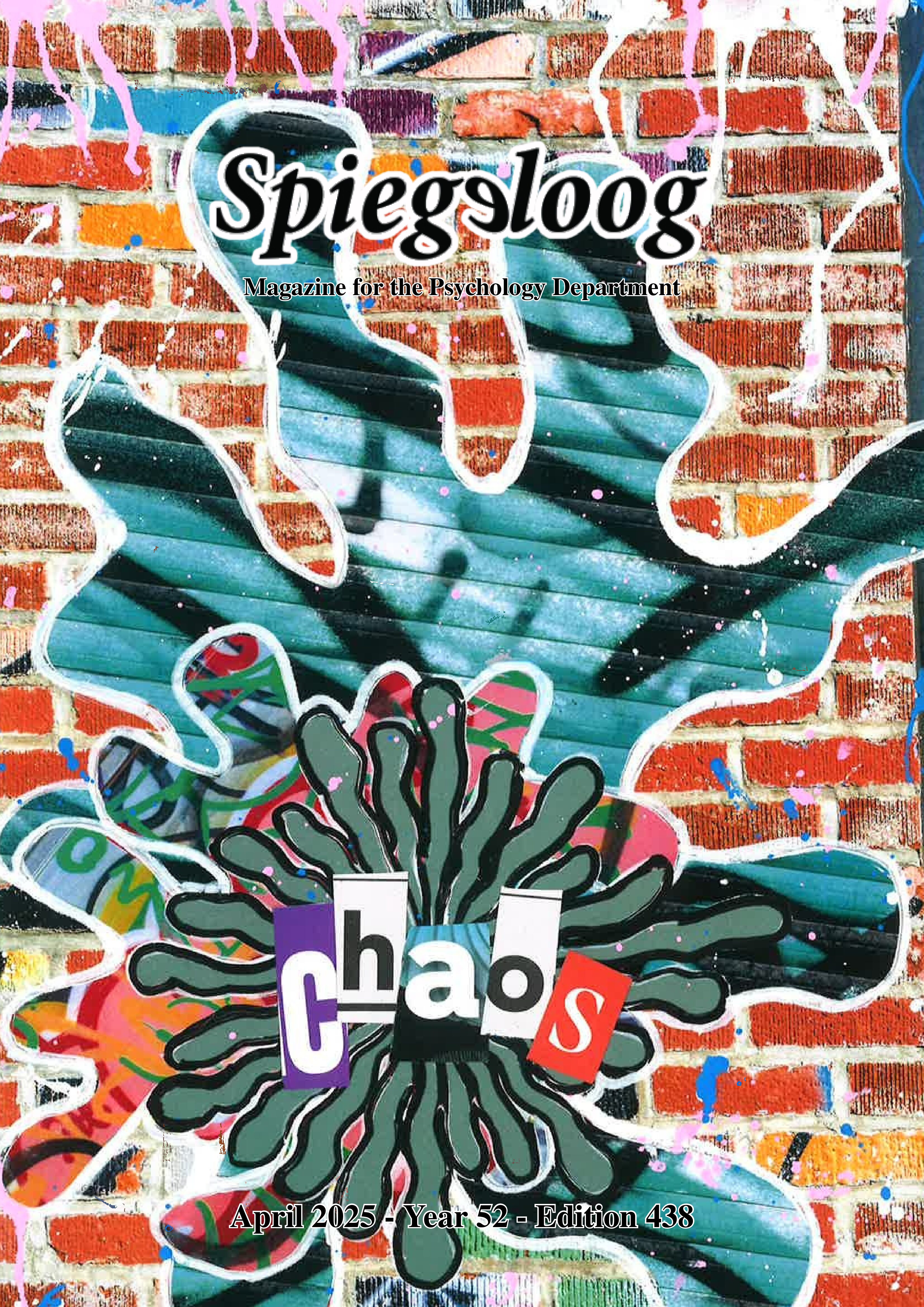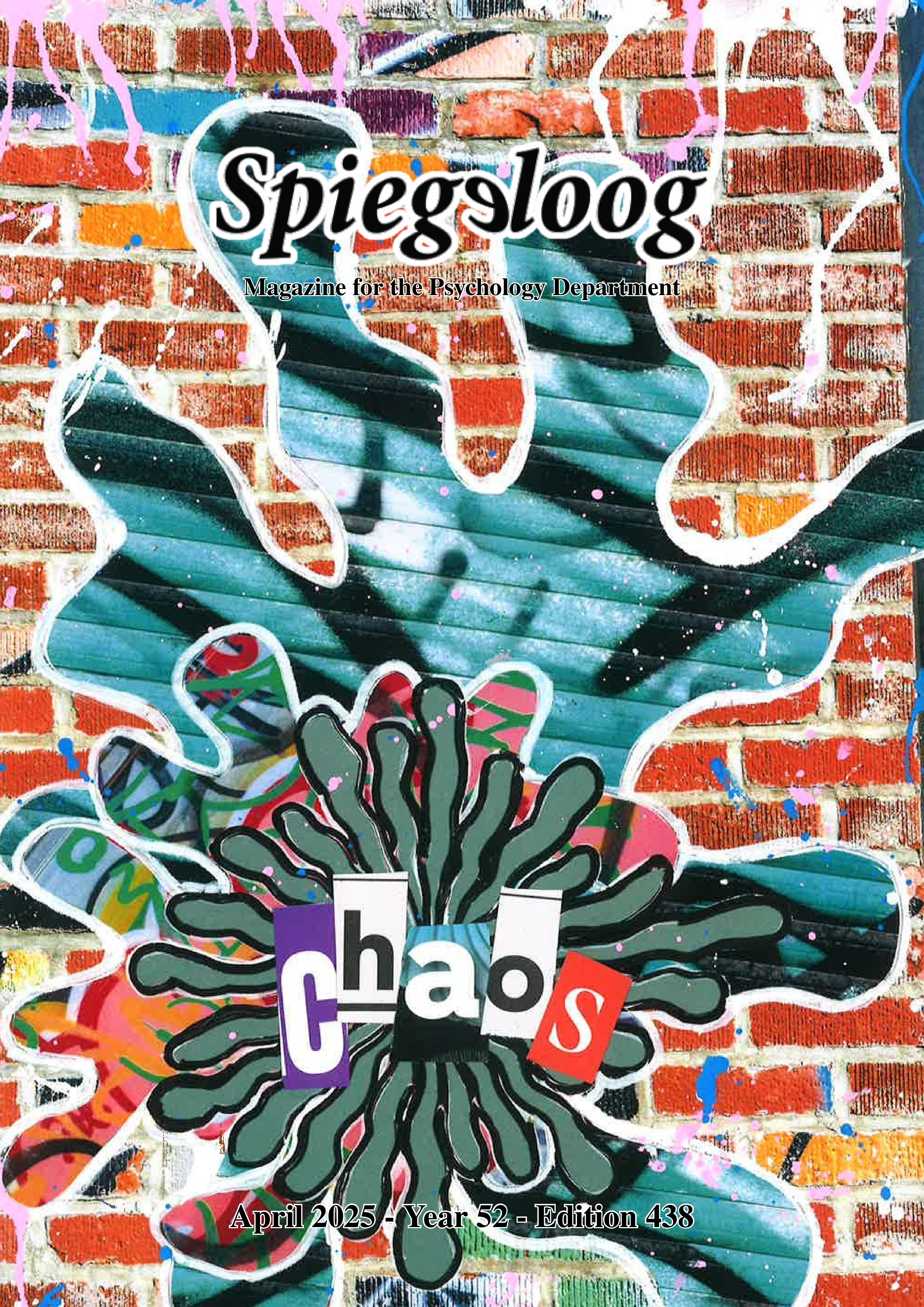
Dear readers,
Life seldom unfolds according to plan. Unexpected events, sudden changes, and unforeseen challenges are constants in our journey. Chaos in psychology is everywhere – both resisted and embraced. In Spiegeloog 438: Chaos, we invite you to explore the concept of structure, randomness, and chaos as integral parts of the human experience.

Cover by Jules Kotowicz
Taymara starts off the issue with a creative, innovative, and imaginative piece on the experience of formlessness and uncertainty. Isabella then probes the key to resilience, exploring how embracing chaos reveals the universal blueprint for adaptive growth. Next, Evita S questions whether therapy could truly heal us without addressing the systems that harm us – delving into the deeply social nature of mental health.
For Athena, Nora discusses what a messy desk means for the mind and personality. Mykolas reviews the fragmented genius of Antanas Škėma’s “White Shroud.” for Tabula Rasa, as madness meets exile in the Lithuanian Ulysses. Then, Sandra examines OCD and hoarding, probing the tension between minimalism and maximalism as they reflect deeper psychological and cultural forces. Anika explores how chaotic music challenges our definition of beauty and structure, from experimental silence to harsh noise.
For Art Affairs, Arya looks into Kandinsky’s unique soul-speaking art, and discusses its evolution through chaos and clarity. Next, Hanna explores the hidden systematic nature of crowds, revealing the power of this complex system. Mykolas writes about societal acceleration – from social media overload to economic despair – and how it drives mental chaos and burnout. Shriya rounds off the issue with a Bacchus about a generation that finds beauty in breakdown, framing chaos as a source of meaning.
We hope you enjoy this issue!
Shriya & Jules
Dear readers,
Life seldom unfolds according to plan. Unexpected events, sudden changes, and unforeseen challenges are constants in our journey. Chaos in psychology is everywhere – both resisted and embraced. In Spiegeloog 438: Chaos, we invite you to explore the concept of structure, randomness, and chaos as integral parts of the human experience.

Cover by Jules Kotowicz
Taymara starts off the issue with a creative, innovative, and imaginative piece on the experience of formlessness and uncertainty. Isabella then probes the key to resilience, exploring how embracing chaos reveals the universal blueprint for adaptive growth. Next, Evita S questions whether therapy could truly heal us without addressing the systems that harm us – delving into the deeply social nature of mental health.
For Athena, Nora discusses what a messy desk means for the mind and personality. Mykolas reviews the fragmented genius of Antanas Škėma’s “White Shroud.” for Tabula Rasa, as madness meets exile in the Lithuanian Ulysses. Then, Sandra examines OCD and hoarding, probing the tension between minimalism and maximalism as they reflect deeper psychological and cultural forces. Anika explores how chaotic music challenges our definition of beauty and structure, from experimental silence to harsh noise.
For Art Affairs, Arya looks into Kandinsky’s unique soul-speaking art, and discusses its evolution through chaos and clarity. Next, Hanna explores the hidden systematic nature of crowds, revealing the power of this complex system. Mykolas writes about societal acceleration – from social media overload to economic despair – and how it drives mental chaos and burnout. Shriya rounds off the issue with a Bacchus about a generation that finds beauty in breakdown, framing chaos as a source of meaning.
We hope you enjoy this issue!
Shriya & Jules
